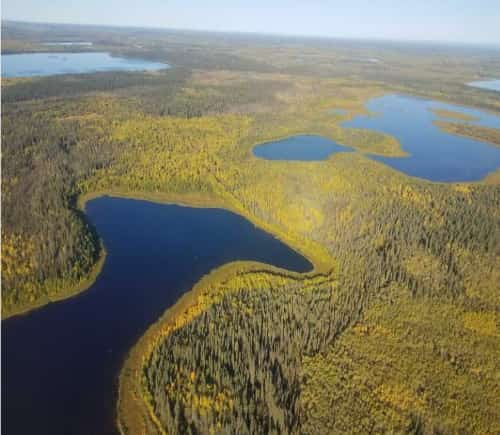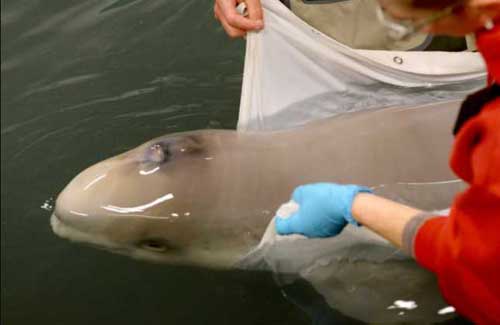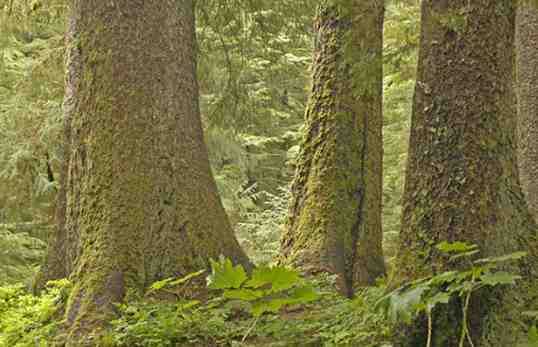Suu’aq; Suyaraq – Shuyak Island
Anchorage-mek tai’akamta plane-gun Suu’aq tang’rtaarpet. – When we come from Anchorage by plane we can see Shuyak Island.
(Click sentence to hear Alutiiq words spoken)
Shuyak Island, the seventh largest of the Kodiak islands, covers sixty-nine square miles at the northern end of the archipelago. Just twelve miles long and eleven miles wide, this small island features a lush blanket of spruce forest and hundreds of small lakes. Unlike surrounding areas, Shuyak is relatively flat, rising to only 660 feet above sea level. However, a complex system of bays and inlets forms the Island’s western coast, creating more sheltered waterways than any other place in the archipelago. Throughout the day, twenty-foot tides change the look of these waterways, exposing reefs and clam beds or filling channels and lagoons. Elders believe that the word suu’aq means “rising out of the water.”
Today, most of Shuyak falls within the boundaries of the Shuyak Island State Park, a wilderness recreation area that attracts sea kayakers, birdwatchers, fishermen, and wildlife photographers. Although the island is quiet, with no modern communities, it was once an integral part of the Alutiiq nation. Archaeological sites illustrate that Alutiiq families lived throughout the coast of Shuyak, and historical records suggest that it was home to at least two Alutiiq communities in the eighteenth century. Early historic accounts suggest that Russian entrepreneur Gregorii Shelikov established trading relations with the chief of one of these villages. However, when villagers killed two Russian workers and a Native interpreter sent to Shuyak to trade, Shelikov retaliated by destroying the community. Rumors suggest that the inhabitants of the other Shuyak village fled out of fear of the Russians. By 1796, there were no Alutiiq communities on Shuyak.
In the twentieth century, Alutiiq people returned to Shuyak to harvest fish. In the 1920s, Fred Sargent, Christ Opheim, and their sons salted salmon on Shuyak for human consumption and as animal food for the growing fox farming industry. In the 1930, entrepreneurs converted a family-run herring saltery in Port William on Shuyak into a salmon, herring, and halibut processing facility, which operated as the Washington Fish and Oyster Company until 1976.
Source: Alutiiq Museum







